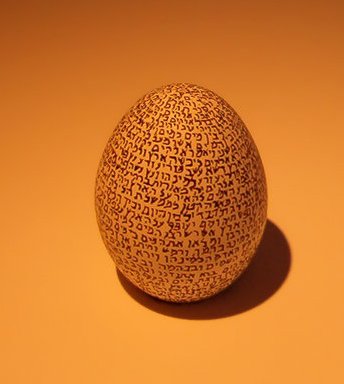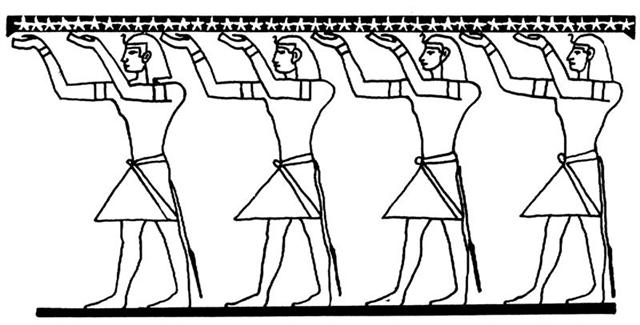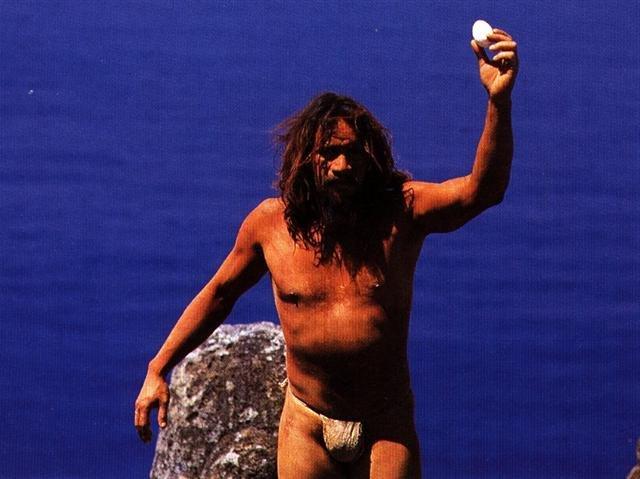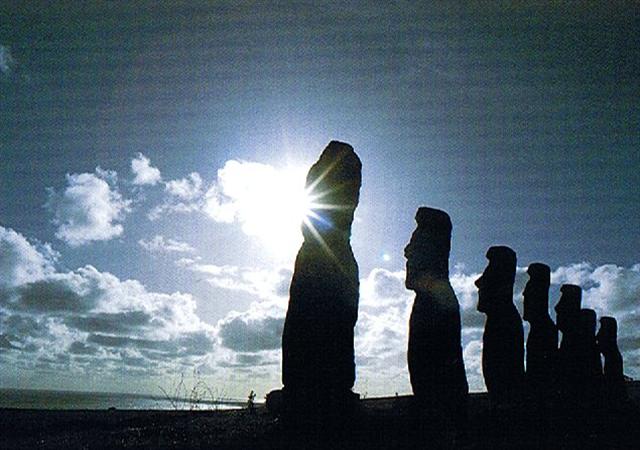415. On Easter Island the birds (manu rere),
i.e. the spirits of spring awakening Mother Nature with their calls, ... From a religious point of view, the high regard for flies, whose increase or reduction causes a similar increase or reduction in the size of the human population, is interesting, even more so because swarms of flies are often a real nuisance on Easter Island, something most visitors have commented on in vivid language. The explanation seems to be that there is a parallel relationship between flies and human souls, in this case, the souls of the unborn. There is a widespread belief throughout Polynesia that insects are the embodiment of numinous beings, such as gods or the spirits of the dead, and this concept extends into Southeast Asia, where insects are seen as the embodiment of the soul ... ... Several of the early missionaries comment with a fine sense of humor upon the mistake the islanders made in calling the cow when first seen a bird. This is the word which led the good missionaries into the error of their own ignorance. Manu is as wholesale in its signification as our word animal, it is generic. In the paucity of brute mammalia the first missionaries found this general term most frequently used of birds, and it was their and not a Polynesian mistake to translate manu into bird. In the material here collected it will be seen that the significations animal and bird are widely extended. In the Paumotu insects are included; the same is true of Mota, where manu signifies beetle as well as bird. Nor is its applicability restricted to earth and air; it reaches into the sea as well. Samoa uses i'amanu (fish-animal) for the whale ... evidently returned late in July or in early August: ... The sooty tern (manu tara) comes to breed in large numbers in July or August off the southwestern point formed by the crater of Rano-kao on three rocky islets, of which the only one accessible to swimmers is Motu-nui ... At the time of the Bull (when Hyadum II had been at 0h) the Egg resting in the Eridanus River (Beid) had been brought up to visibility in MARCH 19 after its close encounter with the Sun 16 days earlier. And at the other side of the sky was the Sting of the Scorpion, adequately an opposite type of sign (†):
The Pope had decided March 21 should be the date for spring equinox, although the astronomically more correct date should have been March 20 (79) = 80 days counted from December 31 (4 * 91 + 1). At the time of the Gate in the Bull (Hyadum I and Hyadum II) the Gate at the opposite side of the sky had been defined by Yed Prior and Yed Posterior in the Serpent-carrier,
and this was not late in JULY / early in AUGUST but in SEPTEMBER. And these 'grasping hands (yed)' - evidently with 3 + 1 fingers - had since then moved 64 days further ahead in the Sun calendar due to the precession, viz. to day 261 + 64 = 325 (alluding to the date for the Julian spring equinox in 'March 25). At the time of rongorongo the place of November 21 (325) was at the Full Moon when the Sun reached Hyadum I in May 22 (142) = 6 days before Aldebaran (*68). And advancing to the beginning of the Rigel year would make things even worse:
The Chinese abandoned following the stars when the solstice was closing in and equally reasonable should the observed equinoxes have priority instead of the stars. There were 4 pillars which should be respected:
... In China, every year about the beginning of April, certain officials called Sz'hüen used of old to go about the country armed with wooden clappers. Their business was to summon the people and command them to put out every fire. This was the beginning of the season called Han-shih-tsieh, or 'eating of cold food'. For three days all household fires remained extinct as a preparation for the solemn renewal of the fire, which took place on the fifth or sixth day after the winter solstice [Sic!] ...
... On the late afternoon of the June solstice, towards sunset, we reached Ahu Akivi near the centre of the western side of Easter Island. This is an inland site, 3 kilometers from the coast. Like Ahu Nau Nau at Anakena,
it has seven Moai, but in this case none of them have topknots and, uniquely, all face west towards the sea - which is clearly visible from the high point on which they stand. There is a curious tradition concerning these grizzled, otherworldly statues, solemn and powerful, with their blank, aloof eye-sockets gazing out over the limitless ocean. Like most of the other Moai of Easter Island the local belief is that they died, long ago, at the time when mana - magic - supposedly fled from the island never to return. However, in common with only a very few of the other Moai, it is believed that these particular statues still have the power, twice a year, to transform themselves into aringa ora - literally 'living faces' - a concept startingly similar to the ancient Egyptian notion that statues became 'living images' (sheshep ankh) after undergoing the ceremony of the 'opening of the mouth and the eyes'. Statues at Angkor were likewise considered to be lifeless until their eyes had been symbolically 'opened'.
We should search for the place corresponding to Beid by moving back from November 21 (325), back among the stars which had fled ahead in the Sun year due to the precession. If 260 days counted from the beginning of side a on the G tablet was representing summer at the time of the Bull, then we could assume the following 104 (= 364 - 104) days were corresponding to autumn - i.e. to the southern spring.
|
|||||||||||||||||||||||||||||||||||||||||||||||||||||||||||||||||||||||||||||||||||||||||||||||||||||||||||||||||||||||||













